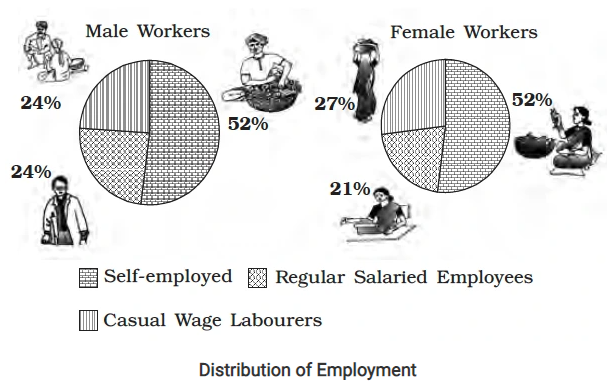Exploring the Dynamics of Employment Growth in India (GS Paper 3, Economy)

Introduction:
- Understanding employment trends in India involves navigating through a complex web of data interpretation and nuanced analysis.
- Over the years, as more refined data becomes available, disagreements over its interpretation become increasingly common.
Analysis of Employment Data (1983-2023):
- Data from the National Sample Survey Office (NSSO) spanning from 1983 to 2023 is scrutinized to discern the evolving nature of employment.
- Principal employment, referring to individuals engaged in substantial work for the bulk of the year, is the focal point of analysis, excluding subsidiary employment.
- Notably, every sub-period under consideration has witnessed growth in principal employment, dispelling notions of jobless growth.
Key Findings:
- The period from 2017-18 to 2022-23 emerges as the phase with the fastest employment growth, witnessing an addition of approximately 80 million jobs.
- This translates to an annual growth rate of 3.3%, surpassing the population growth rate during the same period.
- Crucially, this growth is widespread across rural and urban sectors, spanning manufacturing, agriculture, construction, and services, as well as various demographic segments, including women and older citizens.
Growth in Employment of Women and Older Citizens:
- Notably, women experience the highest growth rate in employment during this period, exceeding 8% annually.
- Additionally, older citizens aged 60 and above are increasingly entering the workforce at a rate of around 4.5% annually.
Reasons for Growth in Employment:
- Various factors contribute to this phenomenon, including changing social dynamics and economic conditions.
- While distress-driven employment is a commonly cited factor, other possibilities include increased flexibility due to declining fertility rates and improved access to resources.
- Moreover, the longer lifespan of older cohorts may contribute to their sustained participation in the workforce.
Sectoral Analysis:
- While manufacturing and construction exhibit robust growth, agriculture and services sectors stand out with even higher rates of employment expansion.
- Interestingly, within agriculture, growth is attributed more to sectors such as livestock and fisheries rather than traditional cropping activities.
Dominance of Self-Employment and Unpaid Family Work:
- A significant portion of the employment growth pertains to self-employment and unpaid family work, comprising 44 million of the total 80 million new jobs.
- This form of employment, often seen as a fallback option, receives considerable support through government schemes like the PMMY (Mudra).
Stagnation in Real Wages:
- Despite the surge in employment, there is relative stagnation in real wages, with nominal wage growth outpacing inflation by a mere 1.2% over five years.
- This stagnation may be attributed to factors such as a larger workforce entering the market and stagnating labor productivity.
Conclusion:
- The surge in employment in India is a multifaceted phenomenon influenced by various factors, including government policies, economic restructuring, and changing demographics.
- Deciphering the underlying causes demands a nuanced understanding of the intricate interplay between these factors.
- Simplistic narratives risk oversimplifying a complex reality, emphasizing the need for rigorous analysis to inform policy decisions and foster sustainable growth in employment and living standards.


